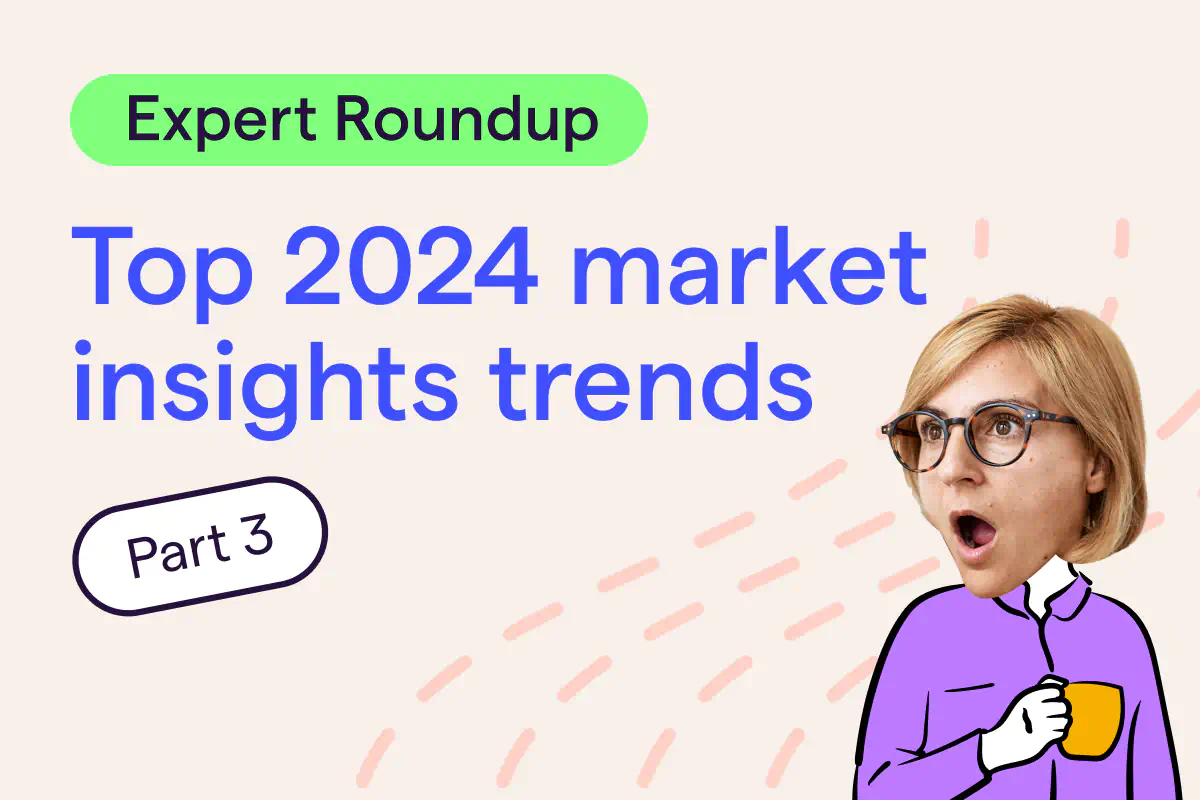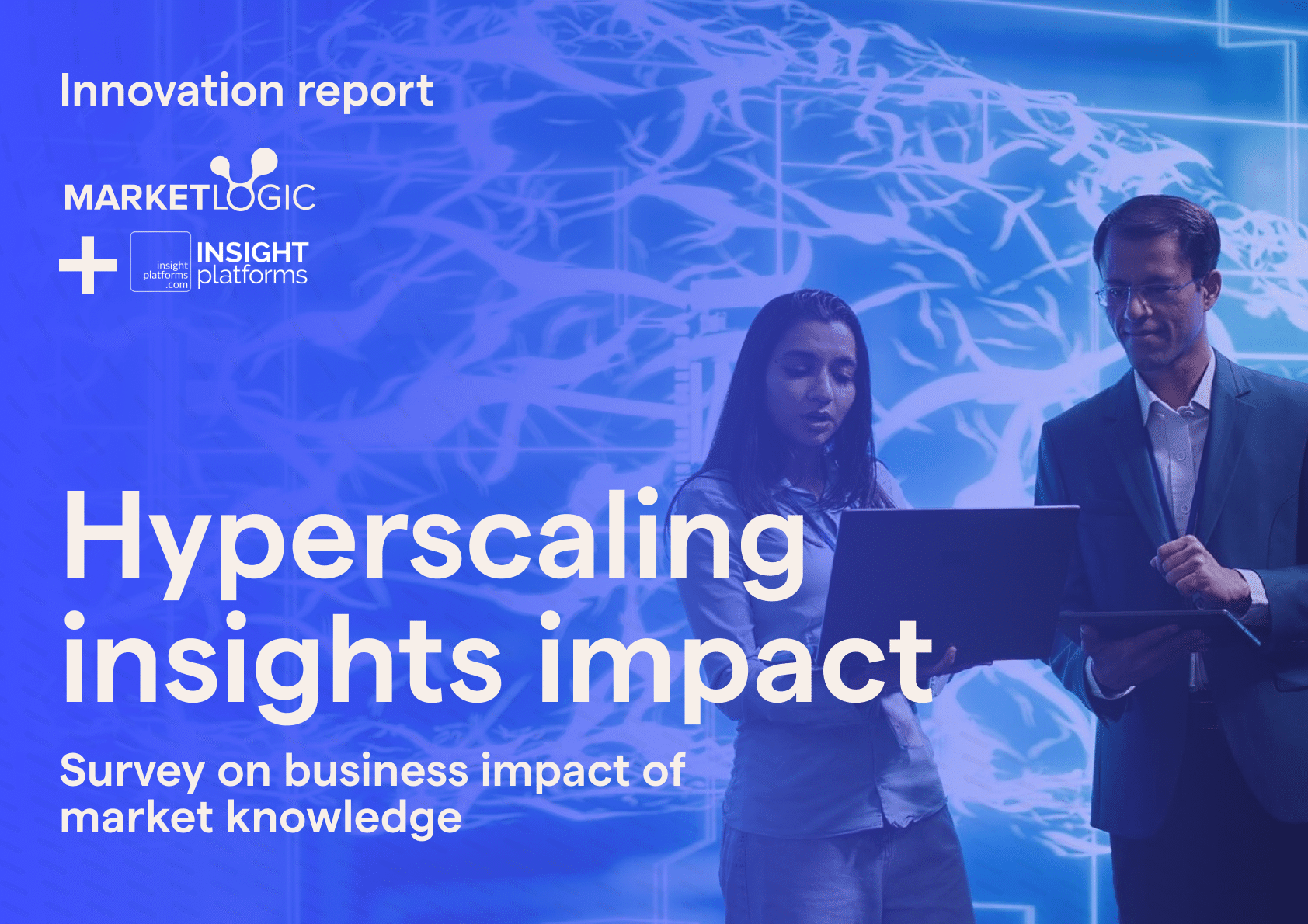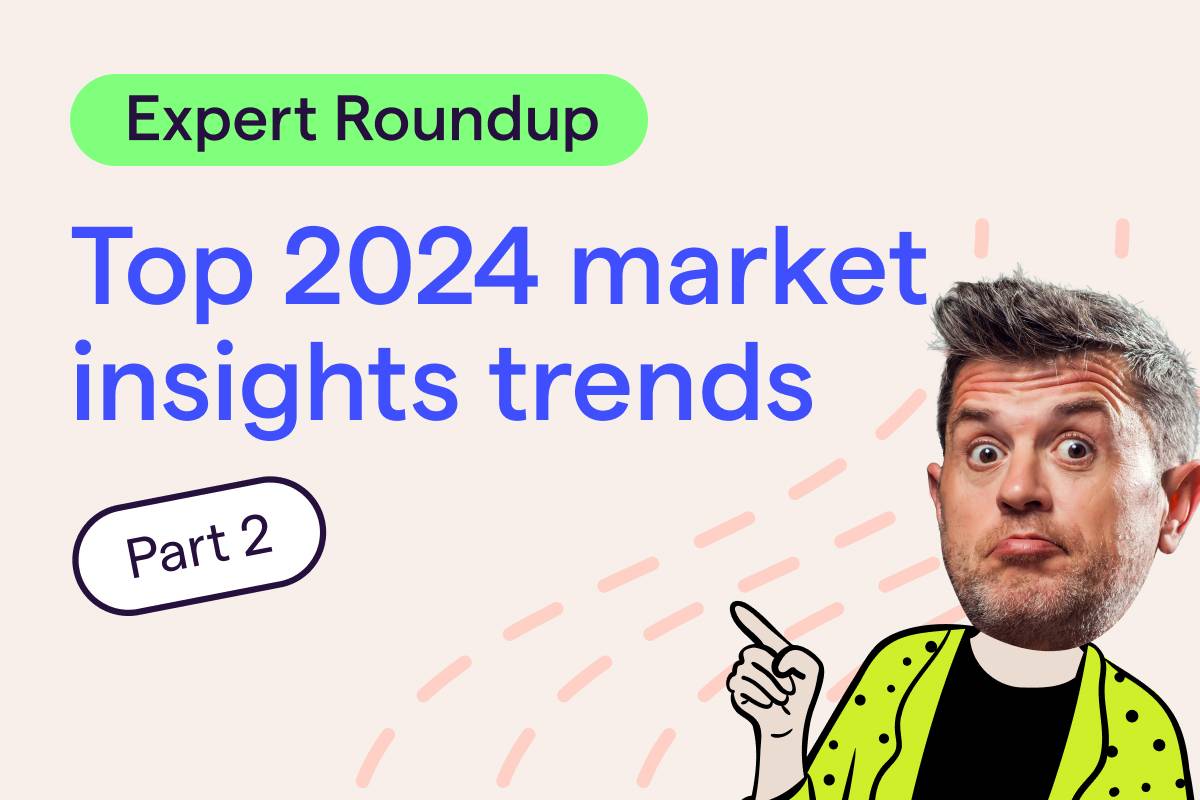Welcome back to our 2024 AI for Insights Trends special! In part one, we had the privilege of hearing from four market insights experts who shared their perspectives on the emerging trends set to shape 2024, alongside valuable learnings from the past year.
In part two, we introduced our first-ever guest columnist, Mike Stevens, who provided his expert industry predictions and guidance on transitioning towards a more AI-driven approach in research and insights.
Now, in part three, we delve even deeper into the evolving landscape of AI in market research with the help of two industry experts, who kindly shared their insights with us. We explore advanced AI strategies, practical applications, and innovative tools that are revolutionizing the field. Whether you’re a seasoned professional or just starting your journey, this installment is packed with insights to help you stay ahead of the curve in 2024 and beyond.
Seth Minsk, Principal, Finish Line Insights; Former Global Consumer Insights Lead, Sanofi Consumer Healthcare
Seth Minsk is the Principal at Finish Line Insights. He has worked in syndicated research (IRI/Nielsen), analytics, and insights at consumer healthcare companies for over 20 years. He is an experienced, progressive, and pragmatic Insights leader with deep expertise in market research, innovation, and brand strategy.
As a thought leader on the cutting edge of practical Insight innovation, he is committed to building careers, teams, and capabilities. He is passionate about putting the customer at the center of decision-making to drive business results.

On using AI to embed insights more deeply into the business: What opportunities do you see for businesses to leverage AI to get insights used more within the business? What changes to processes do you think should be considered?
AI gives us new tools for creating content that excites our business partners about engaging with our customers. This could be through the automated and real-time synthesis of new insights, always-on chatbots that can answer basic “what do we know about…” questions, or even AI avatars representing a prototypical target consumer that our business partners can chat with at any time. It helps us quickly and easily level-set on basic learning so we can spend our time on higher-value, deeper, and more strategic discussions.
However, we can’t just create self-service tools and expect internal clients to go it alone. Some of the Insights role will shift to actively curating the knowledge base and AI tools — building in a point of view and tone of voice that represents the Insights team’s strategic frameworks for understanding the consumer.
We will spend less time executing consumer research and transactionally answering questions from the business, and more time looking ahead and driving consumer-centric decision-making into our business as strategic thinkers and provocateurs.
Seth Minsk on using AI to embed insights into the business
On creating the best human and AI insights combination: How do you envision working with AI as an insights professional? What are the areas in which it can most benefit you from a productivity standpoint, as well as a strategy and insights-discovery perspective?
Insights teams often can’t fully leverage all the research and data the organization has about the customer. AI will allow us to efficiently mine, synthesize, and package learnings for sharing. It will help us quickly identify what we already know and what we don’t, enabling us to influence business decisions in a more timely manner. Additionally, AI will help us design more focused, smaller-scale, deeper primary research specifically targeted at closing learning gaps efficiently and actionably. We will also be able to sort through massive amounts of data more efficiently to find new signals, trends, and insights, driving the business as forward-looking and proactive strategists.
On managing risks: What risks do you believe need to be considered when incorporating AI technology within an insights strategy? What advice would you share on how to manage those risks effectively?
In order to rely on AI to create basic analysis, we’ll need to have confidence that the AI’s findings are accurate. As Insights teams, just as we now have the skills to identify data quality issues from looking at survey data, we’ll need to develop skills and methods for looking at an AI-synthesized output and determine if it is accurate. This is table stakes for ramping up our use of the tools. Beyond that, we’ll also need to ensure that the data that feeds into any AI tool is accurate and appropriate for achieving the output that we expect the AI to produce. Insights teams and their partners who consume insights content will need extensive training and upskilling to ensure that we are maximizing our use of AI and using it appropriately.
Frank Santiago, Former Global Knowledge Manager, Colgate-Palmolive
Frank Santiago is a Managing Director of Knowledge Management, who leads a team of experts in enterprise search technology, artificial intelligence, and workflow optimization.
With over 30 years of experience in the commercial knowledge management industry, he has developed a deep understanding of how to leverage internal and external data sources to solve complex business problems and generate actionable insights.

On using AI to embed insights more deeply into the business: I think the biggest area is automation, especially across the commercial teams. In particular, the ability of AI to process and analyze large data sets in real-time for making better business decisions. This also helps promote overall intuitive thinking. AI can change and help evolve the process of how we innovate, create products, and produce key business ideas.
On creating the best human and AI insights combination: I think AI will help insights professionals become true insight foresight executives, rather than just managing research projects and issuing reports and slide decks. AI will provide insights professionals with the ability to analyze enormous amounts of data that no human can process. However, a human will still need to review the output of all generative AI templates and auto summaries. Also, we need algorithms to keep track of all the business questions asked across the commercial teams and help analyze the responses and outputs.
On managing risks:
I think the main risks are security and accuracy. Also, are data sources trusted sources? Do you own them? Is a team member all data sources feeding the AI ecosystem? Are you maintaining strict guidelines? Are we monitoring the best practices in AI truth in data guidelines?
Frank Santiago on managing risks

Learn more about leveraging AI insights effectively in your organization with the right framework — and boost business results. Download our comprehensive three-part business guide now.
Want to keep up with real-time changes required by the market and become more insights-driven as an organization? Explore how DeepSights™ can help – book a demo today.








